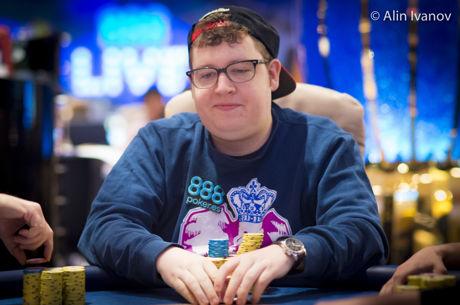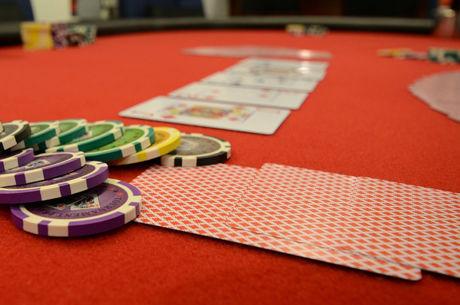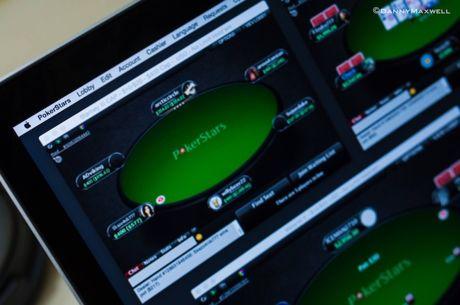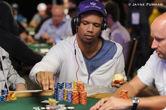Raise-Folding for Value? Sometimes You Can
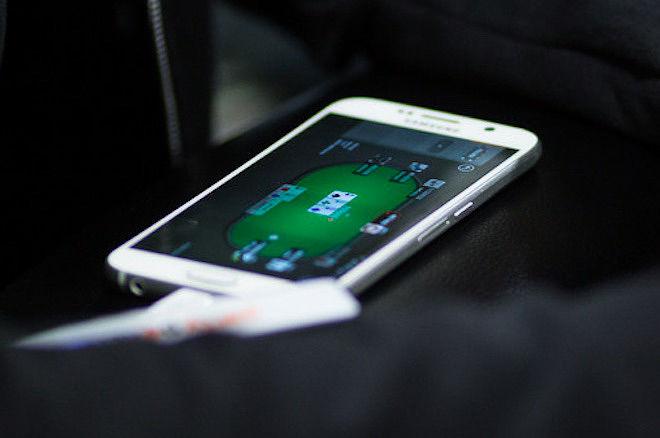
Sometimes when you bet and get raised, reraising is the answer. Sometimes it is not, and folding is the better play.
Most players understand the practicality of raising when worse hands can call and raise-folding when better hands come over the top. But seldom is this understanding consistently demonstrated on the river, particularly when it comes to online poker played at stakes of 100NL and below.
Let's take a look at a real hand from a real money game played out with virtual cards atop an electronic felt that illustrates this point.
Dry Checks
The game was 100NL ($0.50/$1), played six-handed and in the Zoom ("fast-fold") format, and the hand began with a fold from under the gun. The player next to act opened for $2.50, and after it folded around the big blind three-bet to $11. Planning on making things interesting, the initial raiser called.
The flop came A♥7♦4♣. Both players checked.
Let's think about this non-flop-action for a moment. What kind of hands can the big blind most certainly not have after not betting here?
I would exclude bluffs like J9-suited or KT-suited that have some backdoors but not much else going for them. These hands are most likely to take a stab at an ace-high flop because they can get some folds from 88-TT and KQ-type hands as well as from any light preflop peels like 22 that could otherwise scoop the pot away were it to check down.
In other words, if the big blind has a hand with little potential, he might as well bet, and most players in this situation do. But here the big blind checked, which suggests he probably had something else.
What that something else could be might include AA, A3, QQ, 87-suited — we don't know, but it is likely to have showdown value.
For this reason, we also don't know what the in-position player is checking behind. Maybe he has a potential bluff like QJ-suited, but is afraid the big blind will always check and call at least twice when checking on a board with this texture. Then will come a big decision on the river when, most of the time, the player will have backed into nothing.
A hand like AQ would be well-suited to betting now for the in-position player. If it were called twice and checked to on the river, AQ could shove for value or could check back, depending how the situation looks. Of course, the sure-to-bet hands for the in-position player are 44 and 77 — they don't block top pair (like, say, A4-suited and A7-suited), and they don't want to miss out on three streets.
Suspense Turns to River Madness
The turn card was the 4♠, pairing the board. Check-check again.
Unlike on the flop, however, this time we have more information regarding the big blind's range. He is quite unlikely to have a good ace that pot-controlled the flop. A hand like AQ particularly can get two streets of value in this spot with the second street being worth more than the first — can't afford to pot control on this turn. Meanwhile AK, unlikely after the flop check, should now should be ruled out entirely.
Similar things could be said about the in-position player's range. He is now less likely to hold air after having two chances to stab, and if he does, he'll be very unlikely to bluff the river. That is to say, if he doesn't bluff now, he won't bluff on the river.
The river was the 8♥, making the final board A♥7♦4♣4♠8♥. No flush possible and a paired board.
Our preflop three-bettor in the big blind, quiet up to this point, woke up with an $11 leading bet. Then our in-position player, no longer taciturn, decided to raise to $34.
Now if the big blind can't have bluffs, he must have value, and there are three types of value bets on this river:
- A3-type preflop bluffs that finally feel comfortable value betting,
- KK thin-value bets, and
- nutted hands, namely AA.
Only one of these shoves river, which is what the big blind did.
Seldom and Specific
Run through this logic. The in-position player checked down two postflop streets in a three-bet pot, then woke up on an eight. What else could he have but 88 or A8-suited?
We already ruled out the possibility of his bluffing the river after checking both flop and turn. Also, no showdown-bound hands improved to value raises other than eights or ace-eight.
When the big blind comes over the top in this situation for all the money, he doesn't have just any old ace. Nor does he have bluffs, since he would have bluffed already. Nor does he have ace-king, since he would have bet that on the turn if not the flop. He has one hand, almost always.
When something that seldom happens happens, someone has something specific. If the player could have a lot of different things, the seldom happening thing would happen more often.
In this hand, two seldom-happening things came together — the in-position player raising the river, and the big blind reraising the river after checking down to it. And pocket eights was well within its rights to raise the river for value, targeting some curious calls from confused A2 and A9 hands that had settled comfortably into the idea that was the best hand.
But when the big blind responds by coming back over the top in this situation, pocket eights is almost always behind, the river two-outer being a poison pill for a hand that had the board crushed the whole way.
It is an almost perfect example of how there is nothing wrong with raising the river for value and then folding to further action. Except the in-position player didn't fold — he called off with his eights, and got stacked by aces.

